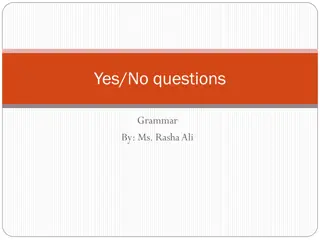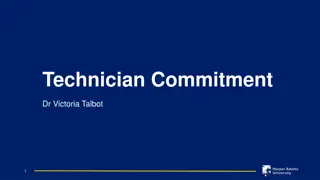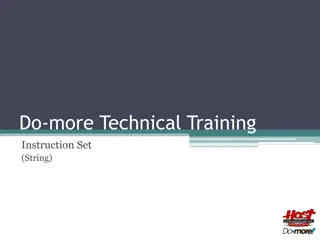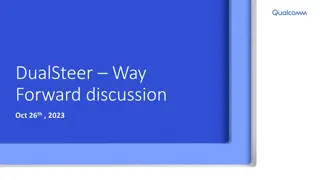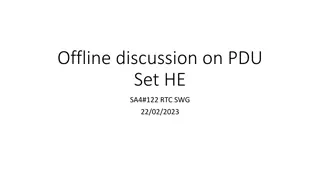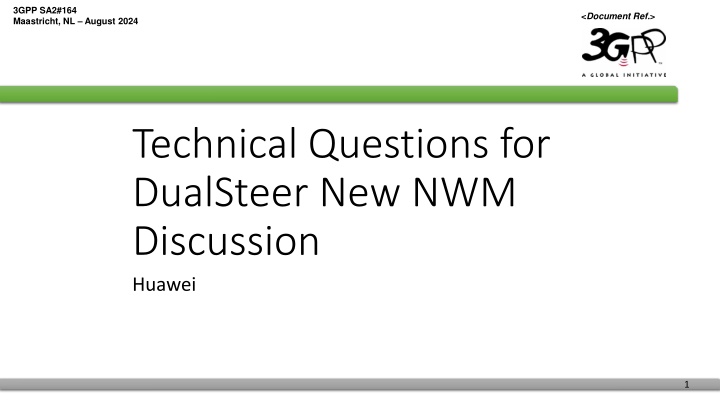
DualSteer New NWM Discussion - Huawei Technical Questions Answered
Explore technical questions and solutions for DualSteer devices in the new network architecture, focusing on subscription, registration, and policy aspects. Learn how the network correlates SUPIs, handles device capabilities during registration, and enforces policies for session management. Dive deep into the specifics of DualSteer technology for seamless connectivity.
Uploaded on | 2 Views
Download Presentation

Please find below an Image/Link to download the presentation.
The content on the website is provided AS IS for your information and personal use only. It may not be sold, licensed, or shared on other websites without obtaining consent from the author. If you encounter any issues during the download, it is possible that the publisher has removed the file from their server.
You are allowed to download the files provided on this website for personal or commercial use, subject to the condition that they are used lawfully. All files are the property of their respective owners.
The content on the website is provided AS IS for your information and personal use only. It may not be sold, licensed, or shared on other websites without obtaining consent from the author.
E N D
Presentation Transcript
3GPP SA2#164 Maastricht, NL August 2024 <Document Ref.> Technical Questions for DualSteer New NWM Discussion Huawei 1
3GPP SA2#164 Maastricht, NL August 2024 <Document Ref.> Assumptions for the solutions The internals of the DS device are not described by the solution. Only minimal interaction is described to ensure the consistency of the flow of data between the DS device (e.g. across the two separate UEs) and the network(s). Answers need to describe directly the solution behavior rather than referring to similar 5GS feature. Answers need to consider whether it is applicable to DualSteer Device in single UE case or in two separate UEs Case or both. 2
3GPP SA2#164 Maastricht, NL August 2024 <Document Ref.> Subscription Aspects 1. How does the solution correlate the two SUPIs for the DualSteer a) in the network (HPLMN)? b) in the DualSteer Device? 2. How does the solution ensure that the two SUPIs of a DS subscription are used by the same DualSteer Device? 3. If the solution supports differentiated SUPIs (e.g. primary/secondary SUPI), how does the network respond to the DS device to know which SUPI corresponds to which role? 3
3GPP SA2#164 Maastricht, NL August 2024 <Document Ref.> Registration Aspects 1. Which DualSteer Device capabilities are sent to the network during Registration procedure (e.g. DualSteer capable, simultaneous transmission capable)? 2. If the DualSteer Device sends DualSteer related information (e.g. capabilities) as part of Registration Request, a) how does the serving network act upon them? b) how does the HPLMN act upon them? 3. Does the serving PLMN need to support DS feature? If so, for what purpose? If not, how is this avoided? 4. How does the network enforce registration-related policy constraints? (see Policy section) 5. How does the DualSteer Device apply the registration-related policies for the second access? (see Policy section) 4
3GPP SA2#164 Maastricht, NL August 2024 <Document Ref.> Policy Aspects 1. Registration-related policies a) Based on the SA1 requirement, what policies are defined to control the registration to the second access? If none, how is the registration to the second access controlled by the network? b) If there are registration-related policies, how are the policies provided to the DS device to control the registration to the second access? What are the triggers for these policies to be updated? 2. Session Management-related policies for steering a) Based on the SA1 requirement, what policies are defined to control the steering of a new service in the DualSteer Device? b) In particular, how do the policies allow the network to indicate a specific access for steering to the DualSteer Device? c) How are the policies provided to the DualSteer Device to control the steering? What are the triggers for these policies to be updated? 3. Session Management-related policies for switching a) Based on the SA1 requirement, what policies are defined to indicate whether a DualSteer Device can use simultaneous transmission or not? b) Based on the SA1 requirement, what policies are defined to indicate to the DualSteer Device that a service is intended to be able to be switched (if necessary) during its lifetime? c) In particular, how do the policies describe the conditions/triggers (e.g. due to access preference, network conditions) for the switching? d) How are the policies provided to the DS device to control the switching? What are the triggers for these policies to be updated? 5
3GPP SA2#164 Maastricht, NL August 2024 <Document Ref.> Session Aspects 1. Service steering a) How is the service steering policy applied to select the access for a new service? Once the access is selected for a new service, what are the conditions for deciding to reuse an existing PDU Session or trigger a new PDU Session establishment? b) Does the solution support the steering of services for LBO sessions (i.e. without DS switching capability)? 2. Session establishment a) If a single access was available during the PDU Session establishment, and a second access is now becoming available, what happens in the DualSteer Device? b) When the PDU Session Establishment Request of the associated PDU session for switching is received by the network, how is the same SMF selected? c) How does the SMF manage the associated PDU session (e.g. SM policy association towards PCF, N4 rules towards UPF) ? 3. Service switching a) How does the DualSteer Device evaluate the switching conditions in case only non-simultaneous transmission is allowed? in case simultaneous transmission is allowed? b) How does the DS device perform the switching in case only non-simultaneous transmission is allowed? in case simultaneous transmission is allowed? c) How does the solution ensures that only one access is used for a service (both DL and UL)? 4. Non-simultaneous transmission enforcement a) How does the solution enforce the policy for non-simultaneous transmission across all PDU sessions of the DualSteerDevice? b) How does the solution support the selection of the same access for all PDU sessions of the DualSteerDevice, and how does it coordinate the switching of all PDU sessions if switching occurs? 6
3GPP SA2#164 Maastricht, NL August 2024 <Document Ref.> Other Aspects 1. What are the trade-offs of the solution? (i.e. aspects setting a constraint on the deployment or capability of the feature, in exchange for some advantage) 2. What are the self-acknowledged limitations of the solution? 3. What is the additional resource usage due to DS feature? 4. How does the solution minimize the resource usage in the network (contexts, UP reserved resources)? 5. How does the solution minimize the service interruption when switching a service? 6. If the subscriptions include the DualSteer aspects but the conditions for using the DualSteer feature are not met (e.g. lack of DualSteer support in device or in serving network), how is the fallback handled? 7. If the serving PLMN shall support DualSteer feature, when the DualSteer Device connects with two serving PLMNs, how to handle if only one of the two serving PLMNs supports DualSteer feature. 7

